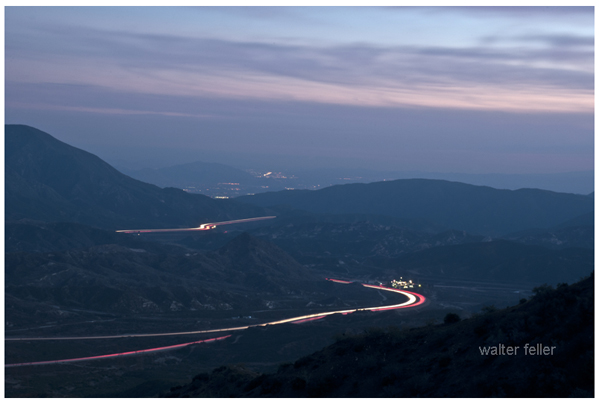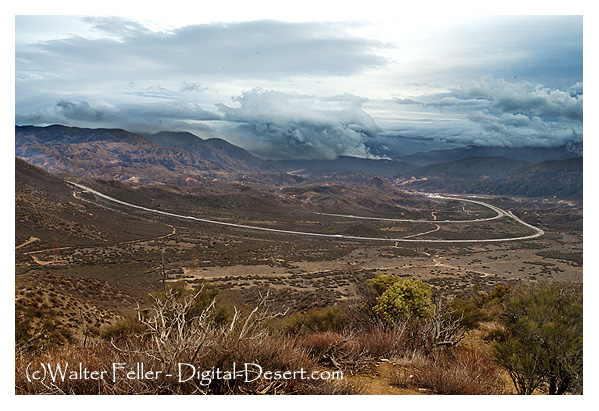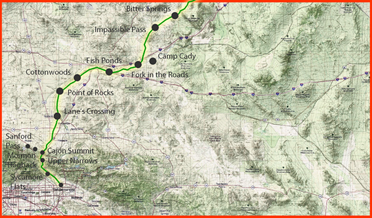Cajon Pass

The San Andreas fault, where the North American and Pacific continental plates meet and grind together, a mountain range was formed millions of years ago. The single range divided and was cut at a right angle by streams flowing toward the lower basin, the higher plate tore away from the ridges. To the east, the San Bernardino range, to the west, the San Gabriels. This breach in the mountains became the "Cajon Pass." In Spanish, "Cajon", translates to "Box", which they felt the pass was shaped like.

The Cajon Pass was lived in and around by the Serrano Indians, although the Indians of the desert would travel through on nearby trails to trade with the coastal indians.

Spanish soldier, Pedro Fages, first traveled through the pass in his search for deserters from the Spanish Army. Horse thieves such as Walkara, known as the "Greatest horsethief in history", used the pass to escape with his thousands of horses stolen in raids. Later, Mormon pioneers, and those eager to find gold in the rush up north.

Looking south down the Cajon Pass
Trails were worn and established, and several smaller passes were used to enter the valley. Eventually, a toll road was cut and graded. A railroad was built; the toll road was paved, realigned and became the Old National Trails highway. Later on, the highway was upgraded again and became Route 66.
Ecology
Southern California Mountains and Valleys: San Gorgonio MountainsThis subsection comprises the lower and warmer parts of the San Bernardino Mountains, which are between the southern branch of the San Andreas fault on the south-southwest and the Mojave Desert on the north. ...
Southern California Mountains and Valleys: San Gabriel Mountains
This subsection comprises the lower and warmer parts of the San Gabriel Mountains, which are between the San Andreas fault on the north-northeast and the Los Angeles and Fontana Plains on the south. ...
Mojave Desert: High Desert Plains and Hills
This subsection consists of the western Mojave Desert, which is mostly alluvial plain and pediment, with relatively small areas of hills and low mountains. ...
Wrightwood
Hesperia
Phelan
San Bernardino
Related Maps
Cajon Pass History
Rancho Muscupiabe
Devore/Keenbrook - Alice Hall
Heritage Resources
Physical Resources
Plants & Wildlife
Mormon Rocks Interpretive Trail
Sycamore Grove
Cajon Junction, Ca.
Cozy Dell
Geology
San Andreas Fault
Cajon Pass Geology
Mormon Rocks
Lost Lake
Cajon Creek
Blue Cut
Lone Pine Canyon
Roads, Trails & Rails
California Southern RR
Sanford Pass
Mormon Hogback
Toll Road
Toll Road through the Pass
National Old Trails Road
Interstate 15 Freeway
State Highway 138
Arrowhead Highway (US 91)
Route 66 Map
Route 66 - 1953
Railroads
Cajon Summit
Posts at San Bernardino
Camp Cajon
Pacific Crest Trail

